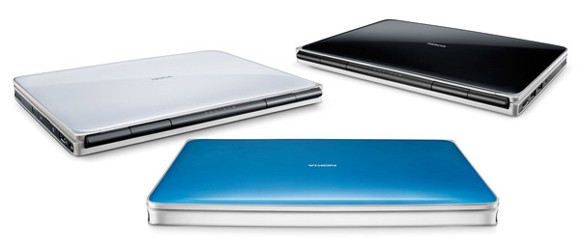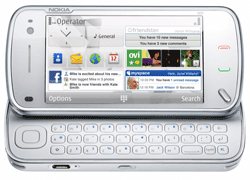 Certain pundits have opined that Nokia may be doomed, because its Symbian operating system and Ovi Store application store provide a far poorer user experience than Apple’s iPhone. I’m not one of the doom-and-gloomers. Nokia is betting that Web applications will catch on in the long run, and it could be right.
Certain pundits have opined that Nokia may be doomed, because its Symbian operating system and Ovi Store application store provide a far poorer user experience than Apple’s iPhone. I’m not one of the doom-and-gloomers. Nokia is betting that Web applications will catch on in the long run, and it could be right.
The long history of Nokia’s Symbian OS and the diversity of devices that Nokia sells have left it in catch-up mode, Web applications provide the company with a second chance to get ahead of the curve. Steve Jobs may have been right when he initially said that developers should write Web apps for the iPhone –he may just have been premature.
Nokia has laid the groundwork for a new crop of Web applications that will run on over two dozen of its Symbian S60 devices with a set of plugins called Nokia Web Runtime Extensions (WRT). It’s a pragmatic strategy, and probably the company’s only solution. Apple, by contrast, has had the luxury of dealing with one mobile platform.
The WRT plug-ins allow application developers to create standards-based Web applications with commonly-used development tools without requiring any specialized knowledge of Nokia technologies.
Nokia’s ultimate goal is to make it possible for end users to create their own widgets, said Craig Cumberland, director of Web tools and technologies at Nokia. The company is partnering with content providers to make that happen. In the meantime, it is betting that its flexibility will lure application makers.
WRT was built using the open source WebKit browser layout engine, which Apple and Google use as the engine for their Web browsers. WRT joins Qt, an open source GUI toolkit, as the two core technology platforms that Nokia will use across all of its devices. The company has also localized WRT into eight languages, including Chinese (tradition and simplified), English, German, Japanese, Korean, Russian and Spanish. “The international market is our bread and butter,” said Cumberland.
It’s becoming a meme, but those technologies give developers greater openness–and since these apps run on the Web in the browser, there’s no App Store-like approval process to complicate matters. Web applications also cut down on application delivery time, and offer faster return on investment for developers, Cumberland added.
That means (at least in theory) there should be a variety of Web applications for end users to pick from within a short period of time. The applications will also blur the lines between the Web and device itself, which many iPhone applications already do.
To give the appearance of native functionality, WRT can integrate with device data and core services like address books. More advanced devices support more advanced applications that can access the touchscreen functionality of the 5800 XpresMmusic and N97, in addition to Nokia’s “home screen” user interface.
Nokia has laid out a clear vision, but its execution relies upon the ability of carrier to deliver fast, reliable data services. The applications will also be simple widgets, not deep, rich pieces of software–at least at first. Web applications won’t level the playing field overnight, but the long-term strategy makes sense to me.
 When I pick up a phone based on Nokia’s Symbian operating system, I get a little teary. (I exaggerate, but only a smidge.) Symbian is the modern-day descendant of Psion’s wonderful EPOC PDA OS from the 1990s, but it doesn’t show a decade’s worth of improvement. Actually, it’s backslid in some ways: It’s not as usable as EPOC was, and current Nokia Symbian devices sure don’t feel as snappy as my trusty Psion Series 5 did.
When I pick up a phone based on Nokia’s Symbian operating system, I get a little teary. (I exaggerate, but only a smidge.) Symbian is the modern-day descendant of Psion’s wonderful EPOC PDA OS from the 1990s, but it doesn’t show a decade’s worth of improvement. Actually, it’s backslid in some ways: It’s not as usable as EPOC was, and current Nokia Symbian devices sure don’t feel as snappy as my trusty Psion Series 5 did.

 I don’t quite understand Nokia’s thinking, but the company has made it official that its Booklet 3G, its first true netbook PC (or any type of full PC for that matter)
I don’t quite understand Nokia’s thinking, but the company has made it official that its Booklet 3G, its first true netbook PC (or any type of full PC for that matter)  With its “
With its “

 Gizmodo’s Matt Buchanan has posted a review of
Gizmodo’s Matt Buchanan has posted a review of